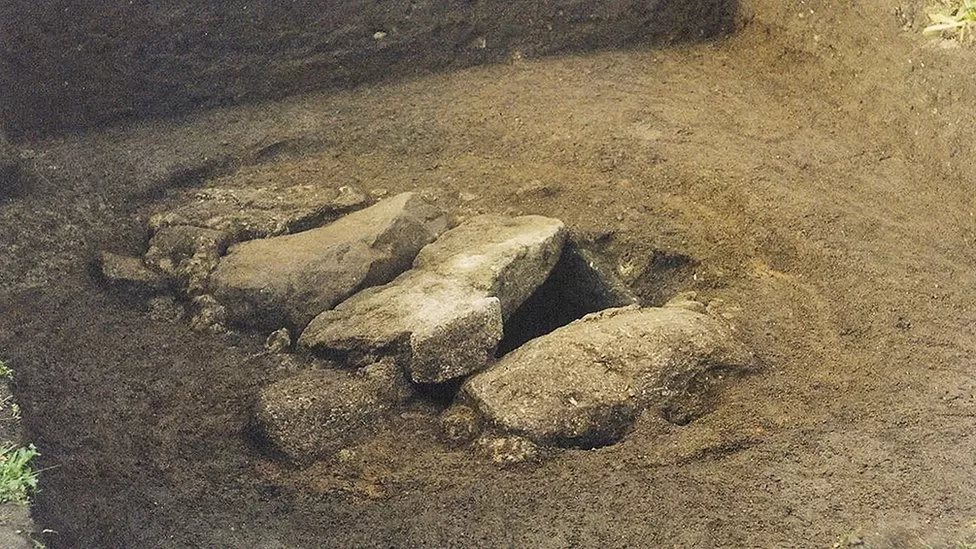A decades-long mystery over whether an Iron Age warrior who lived on the Isles of Scilly was a man or woman has been solved.
Archaeologists had been baffled about the identity of the prehistoric skeleton since it was discovered by a farmer on the island of Bryher in 1999.
The remains were found with both a 2,000-year-old sword and a mirror.
Researchers said new analysis of tooth enamel revealed the warrior was most likely a woman.
Historic England, which led the research, said the findings “provide evidence of a leading role for a woman in warfare on Iron Age Scilly”.
The body said the discovery of the sword and mirror is considered to be “highly unusual” as swords were normally found with men and mirrors with women in other burials of the same period.
The single site on Bryher, discovered in a stone-walled chamber in a potato field, contained both objects and the remains of just one person.

They were re-examined by scientists in the US using a new process that looks at tooth enamel. Previous attempts to identify the remains using DNA analysis had failed due to the disintegration of the bones.
Prof Glendon Parker, from the University of California at Davis, said the team extracted traces of proteins from tiny fragments of surviving tooth enamel.
“Tooth enamel is the hardest and most durable substance in the human body,” he said.
“It contains a protein with links to either the X or Y chromosome, which means it can be used to determine sex. This is useful because this protein survives well compared to DNA.”
Prof Parker said the analysis revealed a 96% probability that the remains belonged to a woman.

He added: “Given the degraded state of the bones, it’s remarkable to get such a strong result. It makes you wonder what could be discovered by re-visiting other badly degraded burials.”
Dr Sarah Stark, a human skeletal biologist from Historic England, said the findings could shed light on the role of women in Iron Age Britain. ‘Captivated by the mystery’
“[The findings] provide evidence of a leading role for a woman in warfare on Iron Age Scilly,” she said.
"Although we can never know completely about the symbolism of objects found in graves, the combination of a sword and a mirror suggests this woman had high status within her community and may have played a commanding role in local warfare, organising or leading raids on rival groups.
“This could suggest that female involvement in raiding and other types of violence was more common in Iron Age society than we’ve previously thought, and it could have laid the foundations from which leaders like Boudicca would later emerge.”

The sword and mirror were returned to the Isles of Scilly Museum in 2002.
Kate Hales, a curator at Isles of Scilly Museum, said the findings meant the story of their discovery would now be reinterpreted.
“Visitors have been captivated by the mystery that the surrounds them,” she said.
“It’s fascinating to know they were buried with a young woman and we look forward to reinterpreting her story, wondering about the kind of life she led, thousands of years ago on our now tranquil islands.”
Cool!
Maybe they were trans I’ve seen other burials that were ambiguous be identified as belonging to some kind of trans or nonbinary person
I think specifically the concept of transgender is fairly modern, and probably shouldn’t be applied to someone from such a different culture. It’s definitely possible they would have been the equivalent to what we call trans, and that’d be cool AF, but there’s no way to differentiate whether or not this was a genetically female person who identified with a different gender role, or if it’s evidence that being a warrior was an acceptable role for anyone regardless of gender.
Either way it’s awesome.
That’s true different cultures had their own thing but there were definitely trans people back then. The only real difference from today is the medical advancements which is major for binary trans people. I agree tho we don’t know the gender of this burial so all we have is what they find.



